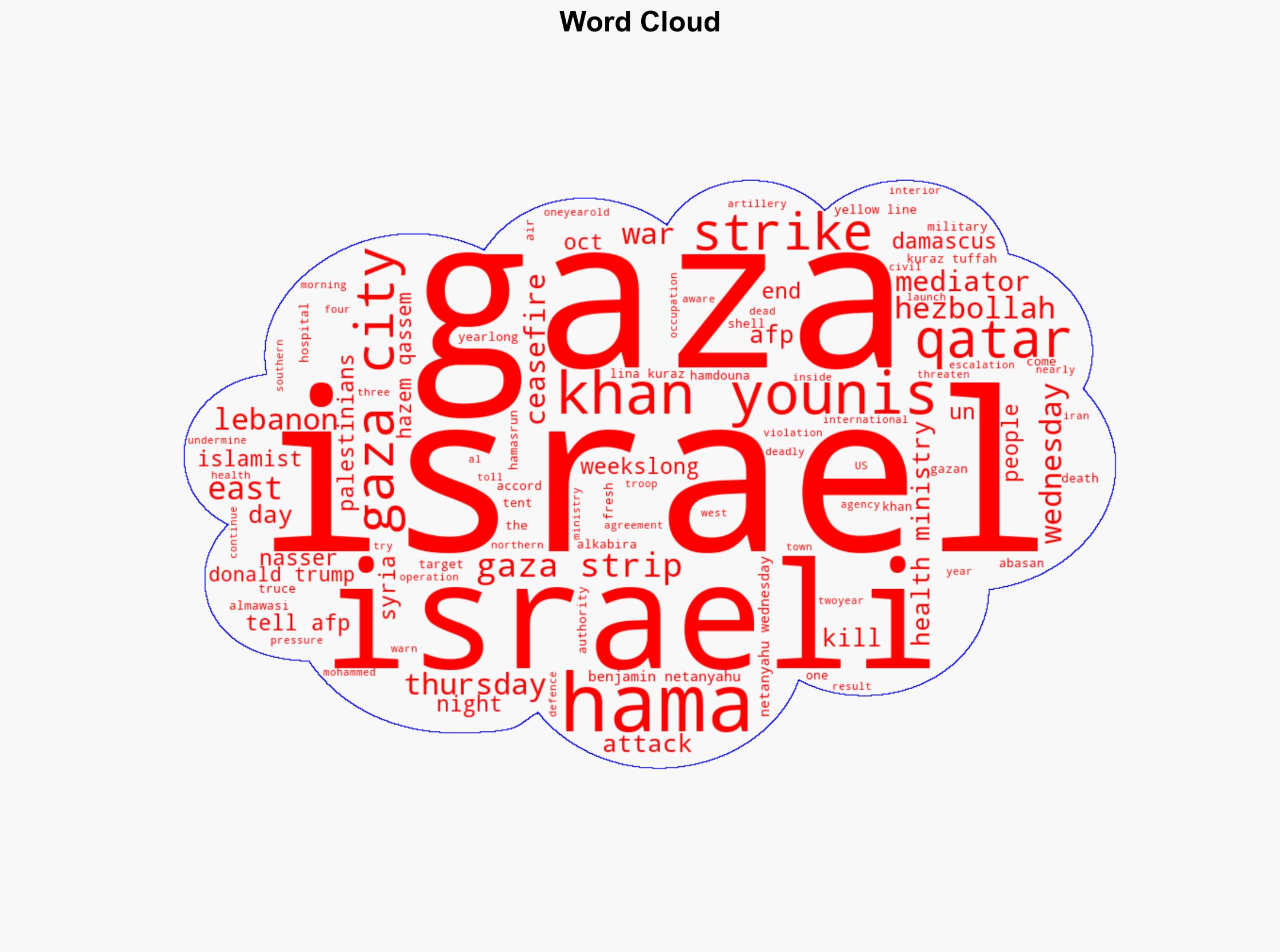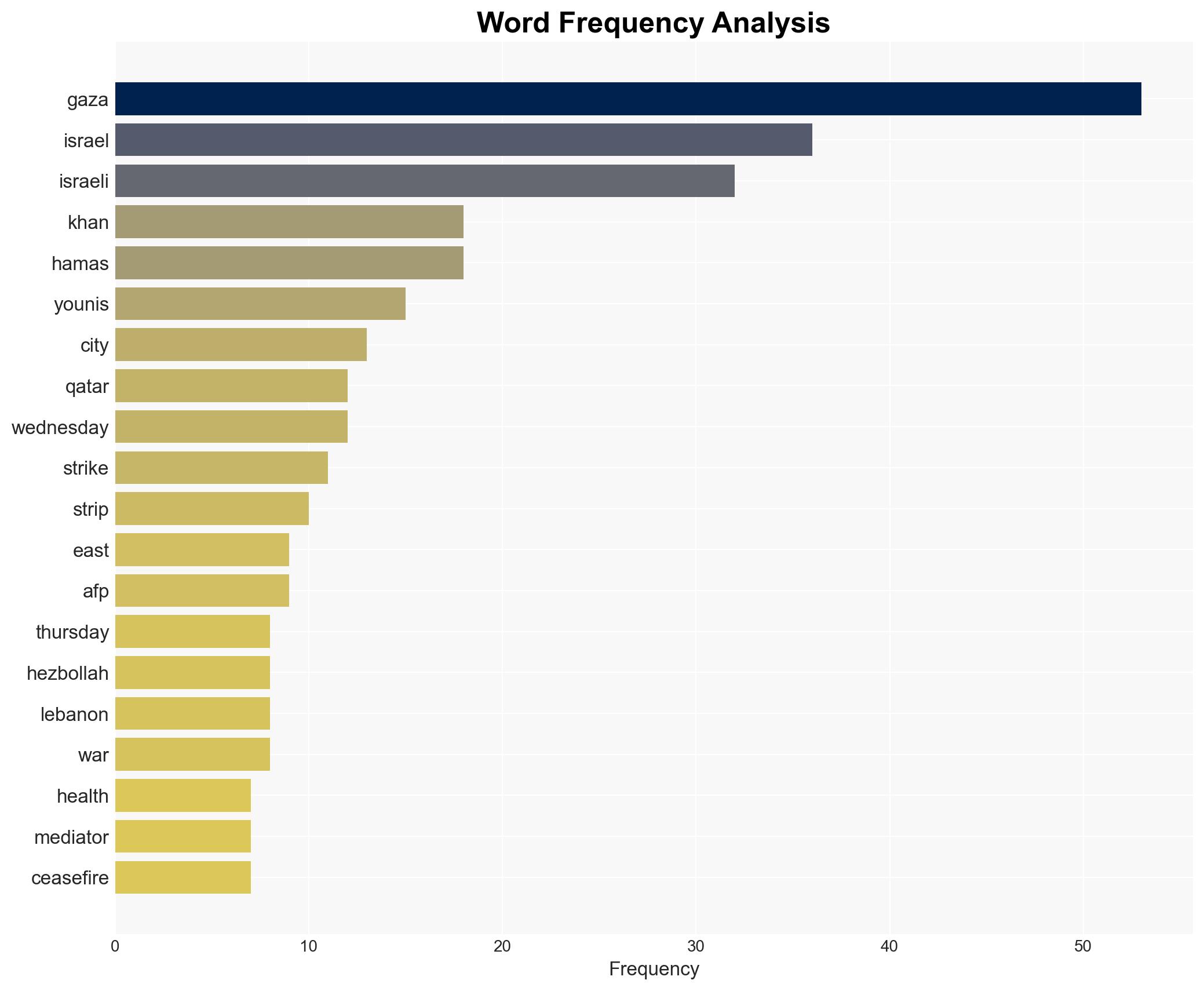Mediator Qatar calls fresh Israel strikes on Gaza ‘dangerous escalation’ – CNA
Published on: 2025-11-20
AI-powered OSINT brief from verified open sources. Automated NLP signal extraction with human verification. See our Methodology and Why WorldWideWatchers.
Intelligence Report:
1. BLUF (Bottom Line Up Front)
There is a moderate confidence level that the recent Israeli strikes on Gaza represent a tactical response to perceived threats from Hamas, rather than a strategic shift towards a broader conflict. The most supported hypothesis is that Israel aims to degrade Hamas’ military capabilities without escalating into a full-scale war. Recommended action includes diplomatic engagement with regional mediators, particularly Qatar, to reinforce the ceasefire and prevent further escalation.
2. Competing Hypotheses
Hypothesis 1: Israel’s strikes are a calculated response to specific threats from Hamas, aimed at degrading their military capabilities without intending to escalate into a broader conflict.
Hypothesis 2: The strikes are a precursor to a larger military operation, potentially influenced by domestic political pressures or strategic objectives beyond immediate security concerns.
Hypothesis 1 is more likely due to the pattern of targeted strikes and the ongoing diplomatic efforts by mediators like Qatar to maintain the ceasefire. The lack of large-scale mobilization of Israeli forces supports this interpretation.
3. Key Assumptions and Red Flags
Assumptions include the belief that Israel’s primary objective is security and deterrence, not territorial expansion or regime change in Gaza. A red flag is the potential for misinterpretation of military actions by either side, leading to unintended escalation. Deception indicators include potential misinformation from involved parties to sway international opinion or justify actions.
4. Implications and Strategic Risks
The primary risk is the potential for a miscalculation leading to a broader conflict, which could destabilize the region further. Politically, an escalation could strain Israel’s relations with regional allies and mediators. Economically, prolonged conflict could impact trade routes and energy supplies. Informationally, both sides may engage in propaganda to influence international perception.
5. Recommendations and Outlook
- Engage with Qatar and other regional mediators to reinforce the ceasefire and establish communication channels to prevent misunderstandings.
- Monitor military movements and rhetoric from both sides for signs of escalation.
- Best-case scenario: Ceasefire holds with diplomatic efforts leading to renewed negotiations.
- Worst-case scenario: Full-scale conflict erupts, drawing in regional actors and destabilizing the Middle East.
- Most-likely scenario: Continued low-intensity conflict with sporadic violence, managed through diplomatic interventions.
6. Key Individuals and Entities
Benjamin Netanyahu (Israeli Prime Minister), Hazem Qassem (Hamas Spokesman), Qatar (Mediator), Hamas, Israeli Defense Forces (IDF).
7. Thematic Tags
Counter-Terrorism, Middle East Conflict, Diplomatic Mediation, Military Strategy
Structured Analytic Techniques Applied
- ACH 2.0: Reconstruct likely threat actor intentions via hypothesis testing and structured refutation.
- Indicators Development: Track radicalization signals and propaganda patterns to anticipate operational planning.
- Narrative Pattern Analysis: Analyze spread/adaptation of ideological narratives for recruitment/incitement signals.
Explore more:
Counter-Terrorism Briefs ·
Daily Summary ·
Support us





